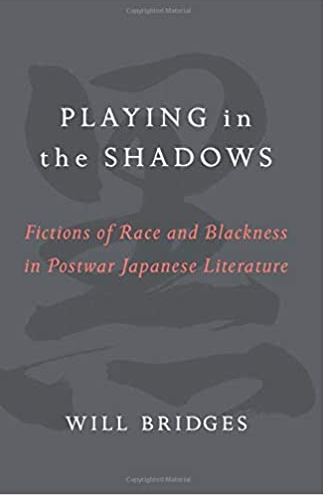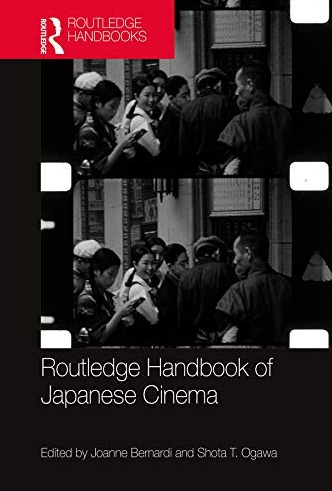MLC Professors Publish Books on Race in Post-War Japanese Literature & Japanese Cinema
Playing in the Shadows: Fictions of Race and Blackness in Postwar Japanese Literature by Associate Professor of Japanese William Bridges and The Routledge Handbook of Japanese Cinema, co-edited by Professor of Japanese and Film and Media Studies Joanne Bernardi.

Playing in the Shadows: Fictions of Race and Blackness in Postwar Japanese Literature by Associate Professor of Japanese William Bridges examines literature engendered by Japanese authors’ robust cultural exchanges with African Americans and African American literature brought on by the Allied Occupation of Japan. Analyzing their interest in reading, interpreting, critiquing, and, ultimately, incorporating the tropes and techniques of African American literature and jazz performance into their own literary works, Bridges argues that such incorporation leads to literary works that are “black” not by virtue of their representations of black characters, but due to their investment in the possibility of technically and intertextually black Japanese literature. These “fictions of race,” he asserts, provide visions of the way that postwar Japanese authors reimagine the ascription of race to bodies—be they bodies of literature, the body politic, or the human body itself.

The Routledge Handbook of Japanese Cinema, co-edited by Professor of Japanese and Film and Media Studies Joanne Bernardi with Shota T. Ogawa, Assistant Professor of Cinema Studies at Nagoya University, Japan, is the first anthology of Japanese cinema scholarship to span the temporal framework of 200 years, from the vibrant magic lantern culture of the nineteenth century, through to the formation of the film industry in the twentieth century, and culminating in cinema’s migration to gaming, surveillance video, and other new media platforms of the twenty-first century. The volume’s twenty-one chapters represent work by authors with diverse backgrounds and expertise, recasting traditional questions of authorship, genre, and industry in broad conceptual frameworks such as gender, media theory, archive studies, and neoliberalism. It is organized into four parts on the following themes: "Decentering Classical Cinema," "Questions of Industry," "Intermedia as an Approach," and "The Object Life of Film."
